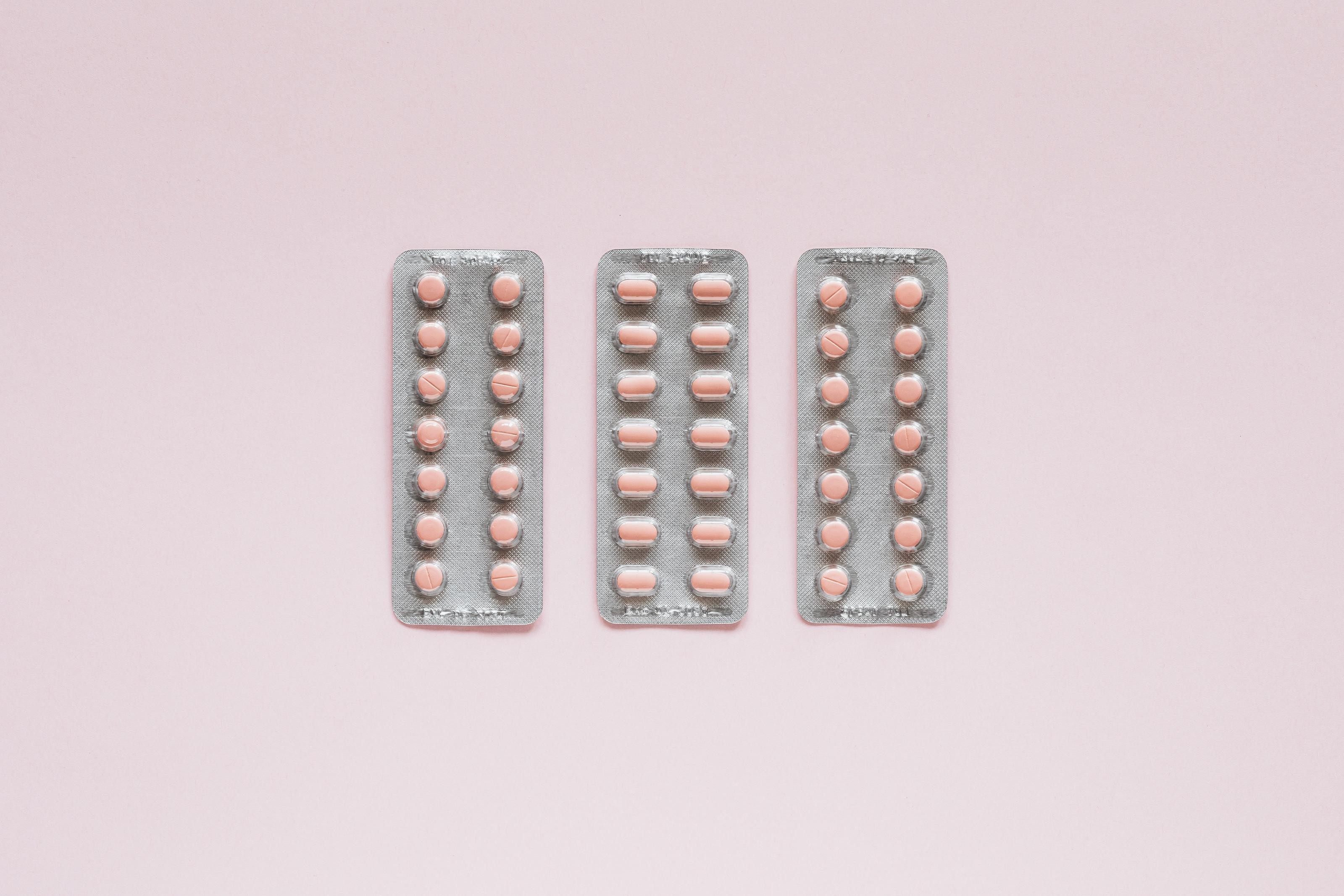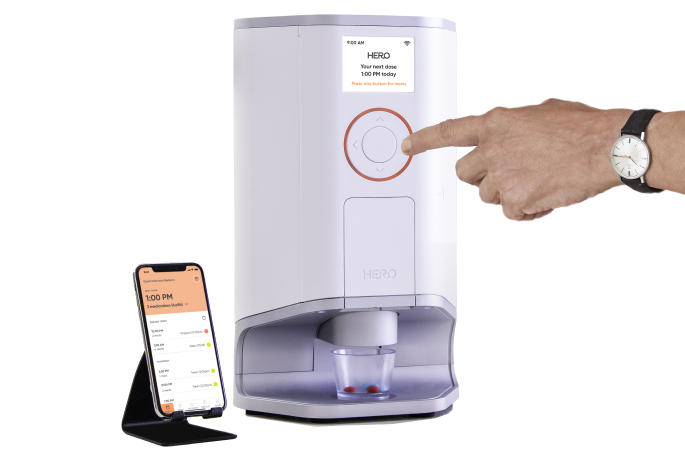Medication adherence vs compliance: How smart tools can bridge the nonadherence gap

‘Medication adherence’ and ‘medication compliance’ have historically been used interchangeably. After all, both terms relate to a patient’s ability to take their medication as prescribed. Although adherence and compliance seem synonymous, read on to discover their subtle differences.
Medication adherence vs compliance: what’s the difference?
Medication adherence is the study of a patient’s medication-taking behavior, with the goal of determining whether they are sticking to their prescriber’s recommendations.1 Typically, medication adherence is measured through patient self-reporting, pill counts, prescription record reviews, and electronic monitoring devices.
Meanwhile, medication compliance measures whether a patient is physically taking their medications as prescribed, and is a part of the broader medication adherence journey. In other words, robust medication compliance is needed in order to improve medication adherence.
Measuring medication compliance involves monitoring a patient’s medication-related activity between physician visits.
Why do patients struggle with medication compliance?
Prescription refills are inconvenient
Filling and refilling prescriptions can be highly time-consuming for patients and their caregivers.2 This issue becomes even more challenging when patients have to juggle five or more medications, or when refill schedules differ for each prescription.
Difficulty sticking to a medication routine
Human brains are prone to error – especially when performing repetitive tasks on an ongoing basis.9 When it comes to patient compliance, patients may take the wrong dose or miss out on life-saving medication.1 These errors can lead to progression of disease, hospitalizations, or even death.4
Patients need more engagement from their healthcare providers
An NCPA (National Community Pharmacists Association) study shows that engaged patients are 2.57 times more likely to take their meds as prescribed. Healthcare providers who connect with their patients to educate, encourage, and communicate regularly can help improve medication compliance.6
How to track medication compliance
Measuring patient compliance can help insurance payers and providers estimate patients’ adherence rates and understand why they may struggle to take their meds as prescribed. Here are some ways in which providers can track how well patients comply with their prescriptions:
Self-reporting
The Morisky scale is a list of eight standardized questions commonly used during patient follow-ups to measure medication adherence.1 However, many patients will skip follow-up visits, and even if they do show up, they may not know if they skipped a medication or took the wrong dose. They may also inaccurately report their compliance to avoid getting in trouble with their physician.1
Pill counts
Pill counting refers to the act of tallying a patient’s medications during their follow-up visits. This strategy can offer a bird’s-eye view of a patient’s compliance, but does not provide any details about skipped medication, wrong dosages, or other challenges that may have been encountered. Plus, patients may not be truthful during follow-up visits, which may further skew their data.
Prescription record reviews
Prescription record reviews involve reviewing patients’ insurance claims and pharmacy records. While providers and insurance payers can glean some information about a patient’s medication habits – including whether they pick up their refills on time – challenges arise when payer, provider, and pharmacy databases are not well-integrated with each other, or if patients switch providers, pharmacies, or payers.
Self-reporting, pill counts, and prescription record reviews have their advantages, but they do not give us the complete picture. The issue of why patients may not take their meds as prescribed is complex, so we need to learn patients’ pain points in order to help them overcome their challenges and improve medication adherence.
The new generation of medication compliance tech is here
Patients, providers, pharmacies, and payers need a more effective way to keep track of patient compliance.
Fortunately, patients can now access convenient medication management systems that offer a connected ecosystem of supportive care, no matter where they are.
Hero is the first end-to-end medication management service taking the hassle out of taking meds. A Hero subscription includes access to an award-winning smart dispenser, medication management app, automatic refills with free delivery, and 24/7 live support for both patients and their caregivers.
From streamlining refills to automating adherence tracking, Hero helps eliminate some of the biggest barriers to patient compliance and brings greater visibility to the patient medication journey..
As mentioned above, improving medication compliance is the key to increasing overall medication adherence. At-home medication management tools can help patients overcome pain points on their medication journey, helping to improve medication adherence rates, improve outcomes, and reduce avoidable hospitalizations.
Sources
1. Piña, I. L., Di Palo, K. E., Brown, M. T., Choudhry, N. K., Cvengros, J., Whalen, D., ... & Johnson, J. (2021). Medication adherence: importance, issues and policy: a policy statement from the American Heart Association. Progress in cardiovascular diseases, 64, 111-120. https://scholar.harvard.edu/files/nkc/files/2021_a_policy_statement_from_the_american_heart_association_prog_cardiovasc_dis.pdf
2. Hoffmann, T., Jansen, J., & Glasziou, P. (2018). The importance and challenges of shared decision making in older people with multimorbidity. PLoS medicine, 15(3), e1002530. https://journals.plos.org/plosmedicine/article?id=10.1371/journal.pmed.1002530
3. Najimi, A., Mostafavi, F., Sharifirad, G., & Golshiri, P. (2018). Barriers to medication adherence in patients with hypertension: A qualitative study. Journal of Education and Health Promotion, 7. https://www.ncbi.nlm.nih.gov/pmc/articles/PMC5852980/
4. How does Hero Refill & Delivery work? (n.d.). Herohealth.Com. Retrieved from: https://support.herohealth.com/en/articles/8020042-how-to-refill-medication-video-tutorial
5. Faisal, S., Ivo, J., & Patel, T. (2021). A review of features and characteristics of smart medication adherence products. Canadian Pharmacists Journal/Revue des Pharmaciens du Canada, 154(5), 312-323. https://journals.sagepub.com/doi/pdf/10.1177/17151635211034198
6. Painter, J. T., Moore, G., & Morris, B. (n.d.). Addressing medication non-adherence through implementation of an appointment-based medication synchronization network. Ncpa.Co. Retrieved April 26, 2022, from http://ncpa.co/uploads/Arkansas-Report-Final.pdf
7. Miller, T. A. (2016). Health literacy and adherence to medical treatment in chronic and acute illness: A meta-analysis. Patient education and counseling, 99(7), 1079-1086. https://www.ncbi.nlm.nih.gov/pmc/articles/PMC4912447/
8. Zullig, L. L. (2018). The new landscape of medication adherence improvement: where population health science meets precision medicine. Patient Preference and Adherence, 12, 1225-1230. https://www.ncbi.nlm.nih.gov/pmc/articles/PMC6049050/
Complex med schedule? We solved it.
Hero’s smart dispenser reminds you to take your meds and dispenses the right dose, at the right time.

The contents of the above article are for informational and educational purposes only. The article is not intended to be a substitute for professional medical advice, diagnosis, or treatment. Always seek the advice of your physician or other qualified clinician with any questions you may have regarding a medical condition or its treatment and do not disregard professional medical advice or delay seeking it because of information published by us. Hero is indicated for medication dispensing for general use and not for patients with any specific disease or condition. Any reference to specific conditions are for informational purposes only and are not indications for use of the device.



